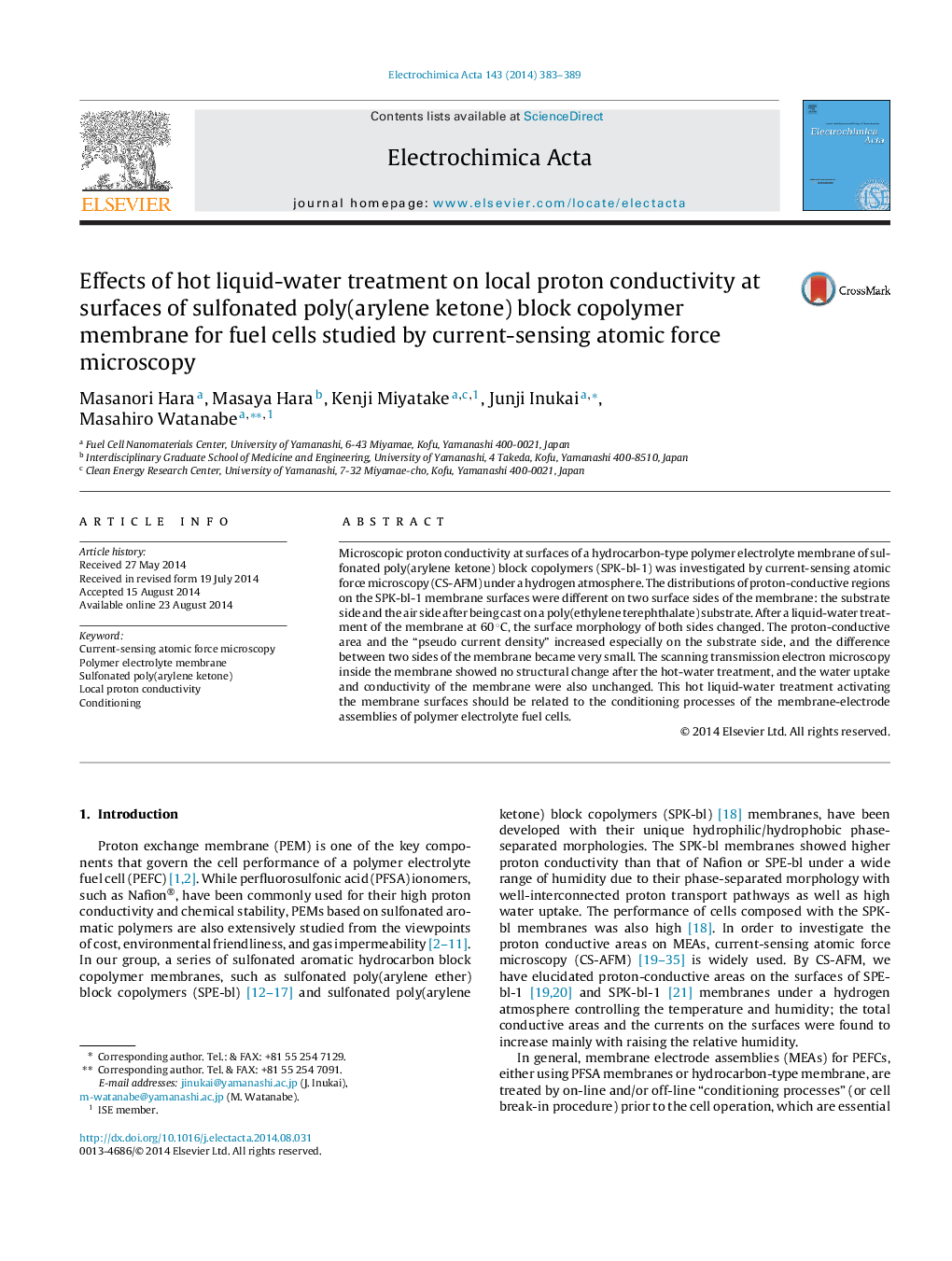| کد مقاله | کد نشریه | سال انتشار | مقاله انگلیسی | نسخه تمام متن |
|---|---|---|---|---|
| 185176 | 459591 | 2014 | 7 صفحه PDF | دانلود رایگان |
• Proton-conductive areas on SPK-bl-1 surfaces were investigated by current-sensing AFM.
• The distributions of proton-conductive spots on the substrate and air sides were different.
• After the hot-water treatment, the surface morphology changed, and the surface conductivity increased.
• After the hot water treatment, the bulk structure, water uptake, and conductivity did not change.
• The relationship between the MEA conditioning and the hot-water treatment was discussed.
Microscopic proton conductivity at surfaces of a hydrocarbon-type polymer electrolyte membrane of sulfonated poly(arylene ketone) block copolymers (SPK-bl-1) was investigated by current-sensing atomic force microscopy (CS-AFM) under a hydrogen atmosphere. The distributions of proton-conductive regions on the SPK-bl-1 membrane surfaces were different on two surface sides of the membrane: the substrate side and the air side after being cast on a poly(ethylene terephthalate) substrate. After a liquid-water treatment of the membrane at 60 °C, the surface morphology of both sides changed. The proton-conductive area and the “pseudo current density” increased especially on the substrate side, and the difference between two sides of the membrane became very small. The scanning transmission electron microscopy inside the membrane showed no structural change after the hot-water treatment, and the water uptake and conductivity of the membrane were also unchanged. This hot liquid-water treatment activating the membrane surfaces should be related to the conditioning processes of the membrane-electrode assemblies of polymer electrolyte fuel cells.
Figure optionsDownload as PowerPoint slide
Journal: Electrochimica Acta - Volume 143, 10 October 2014, Pages 383–389
